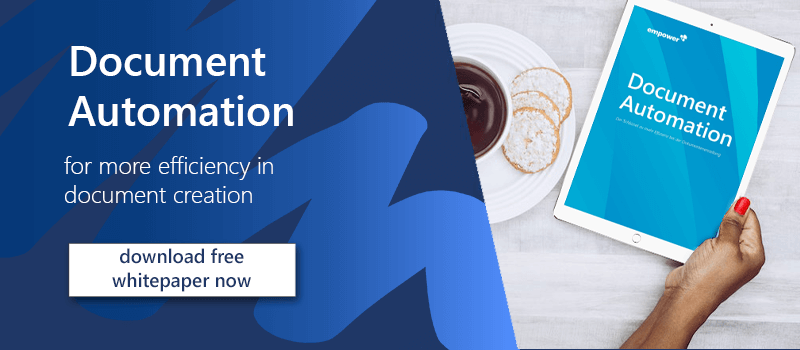Dynamic templates: benefits, uses, and tips
Dynamic templates are files that generate or customize content or information in a flexible and automated manner. Unlike static templates, which contain fixed and unchanging content, dynamic templates adapt to changing conditions, data, or user requirements.
Why are dynamic templates important? What are the benefits?
Dynamic templates are important play a critical role in many areas of modern communication and automation. Benefits that should make dynamic templates a part of your brand communications include:
- Automation: Dynamic templates make it easy to automate communication processes. Recurring tasks can be performed automatically - increasing efficiency and minimizing human error.
- Data integration: These templates seamlessly integrate with multiple data sources, including databases, APIs, and external systems. Content is always up-to-date based on real-time data.
- Correct content presentation: Dynamic templates automatically format content to ensure that it’s always brand compliant.
- Personalization: Dynamic templates enable personalizing content so companies can respond to the needs and preferences of specific target audiences. Personalized messages and content more effectively attract and retain customers because information is tailored to their interests, and delivered consistently and accurately. This improves the user experience.
- Scalability: Content and communications can scale using dynamic templates. They let organizations respond quickly and efficiently to changes. They automatically filter large volumes of information without having to make manual adjustments.
- Time savings: Using dynamic templates, organizations save time and resources by eliminating the need to manually create or update content. This is especially beneficial for mass communications, such as email marketing campaigns.
Overall, automated dynamic templates enable more efficient, flexible, and customer-centric communications across industries and use cases. They play a key role in optimizing business processes and increasing the efficiency and effectiveness of communication strategies.

Dynamic vs. static templates
The main differences between dynamic and static templates are flexibility and adaptability.
| Static templates | Dynamic templates | |
| Content flexibility | Fixed, unchangeable | Flexible, customizable |
| Personalization | None or very limited | Extensive |
| Update | Manual update | Automatic update |
| Scalability | Low scalability | Scalable without manual intervention |
| Automation | Limited capabilities, manual intervention required | Ability to integrate with automated workflows |
| Data integration | Normally not possible | Seamless integration possible |
Areas where dynamic templates add value
While static templates focus on traditional paper documents such as letters or business cards, dynamic templates affect many areas of digital communication, such as:
- Customer relationship management (CRM): CRM systems use dynamic templates to create personalized documents such as quotes, contracts, and invoices based on customer profile data.
- Email marketing: Email marketing automation uses dynamic templates to send personalized emails to large lists of subscribers. They can include fields for the recipient’s name, specific offers, or recommendations.
- Document generation: In applications like Microsoft Word or Google Docs, dynamic templates automatically generate reports, letters, contracts, and other documents. This is especially useful when documents need to be updated regularly where certain sections or information are standardized, while other sections include variable data. They’re widely used in business areas such as finance, human resources, marketing, and sales.
- Presentations: In presentation software such as Microsoft PowerPoint or Google Slides, dynamic templates can create automatic slide layouts. This makes it easier to create and update presentations.
- Web development: When building websites, dynamic templates deliver consistent designs and structures for different pages or content. Content management systems (CMS) like WordPress often use dynamic templates to organize website content.

Tips for creating dynamic templates
Creating dynamic templates typically requires specialized software or tools that allow inserting variable content and automated functions. The choice of dynamic template software depends on your specific use case.
Creating dynamic templates requires careful planning and implementation to ensure that the templates are flexible, efficient, and user-friendly.
- Before you begin creating dynamic templates, establish clear requirements and goals. Understand the type of content or documents you want to generate and the data sources or information you need.
- Choose a tool or software. This can include programs such as Microsoft Word or Microsoft Excel, as well as Adobe InDesign, content management systems, or email marketing tools.
- Use placeholders or variables in your templates to mark the locations where dynamic data or content should be inserted, such as [name], [product name], or [customer number]. Placeholders use different formats and naming conventions depending on the software you’re working with.
- Make your templates as flexible as possible so they can be easily adapted to different needs. Avoid hard coding data and static elements wherever possible, use variables instead.
- When creating dynamic templates, it’s helpful to use a template engine. This kind of tool simplifies the process of replacing placeholders with data and allows for better separation of templates and code.
- Ensure that the data you insert is validated and processed securely. This is especially important to avoid security vulnerabilities when inserting data from external sources.
- If your templates need to accommodate different sizes and screen resolutions, use responsive design techniques to ensure that content displays correctly on each user’s device.
- Carefully document your templates, especially if others will edit or manage them. Explain how merge fields work and what data sources are needed.
- Test your dynamic templates thoroughly to make sure they work as expected. Make sure that all placeholders are used correctly and that the generated content or documents meet the required quality standards.
- If you create similar templates for different purposes, consider how you can reuse template components to minimize development effort.
- Back up your templates and the data they contain regularly so you can revert to previous versions if problems arise.
- Plan for scalability in your dynamic templates, especially if you expect to handle more data or content in the future. Your templates must keep up with your growing needs.
Creating dynamic templates requires patience and care. But it’s a powerful way to automate processes and increase efficiency in a variety of application areas.
Create dynamic templates with empower® Content Enablement
Creating and maintaining dynamic templates can be time consuming and tedious.
Implementing an automated document creation tool minimizes this time constraint and makes template management easy. How?
empower® Content Enablement creates finished documents for you in no time - always with the latest content and perfectly formatted. Generating a document is simple: all you have to do is fill out a short form based on a template that is created just once according to your wishes. Data from various sources can be included.
Do you have any questions? Or would you like to know more? Feel free to contact us, we are here to help you!
You May Also Like
Related articles

PowerPoint templates: effective and brand consistent communication

Template management systems: brand consistency made easy


